|
Occasionally you may see photos of me working with my bees without safety gear. Most beekeepers wear a veil and jacket to keep from getting stung. But I believe the best thing to keep you safe is knowing what to expect. The best thing to keep you safe is knowing what to expect.
The more you know about what to expect the better prepared you can bee to work with bees. I know that some days I am fine without gloves and a Jacket but there may be other days that I need them. I am not more brave than my beekeeper friends wearing full suits, but I do think that this year I have been blessed with a calmer colony of bees. I am always prepared and have water, gloves, a jacket, veil and allergy medication on hand just in case. Yesterday I was walking back to my car after working with the bees and one got stuck in my hair. I tried my best to help her out while staying calm, but I got stung anyway. I am sure if I got lost in a head of hair I would be scared, frustrated, and ready to sting whatever was trapping me. I am not mad, but a little sad for that little stuck bee. As soon as I was stung, a friend helped me pull the stinger out. Because it was pulled out so fast, It wasn't as painful as my last sting.
0 Comments
The other day, My classmates and I were invited to see how honey is harvested. Another mentor, Bob, had some neat tools to help get the honey out of the hive. Here is a look at the process of harvesting honey. You can click on the small photos to make them larger. Tools of the HarvestBob, knew what to expect so he put a large tarp down so that we wouldn't make such a sticky mess. Here are some photos of the tools we used. We had a large plastic tub with a grate in it to uncap the honey. All of the cappings would fall into the tub and any honey would fall through the grate. After uncapping honey we could put the frame in the buckets or use an extractor to get the honey out. The buckets have a nylon strainer so that only honey will pass through it. Taking off the CapsThe first part of honey harvest is bringing in the frames that are capped and filled with honey. To avoid bringing the bees in with the super box, you can brush them off with your bee brush, use a smelly fume board, or even use a leaf blower. If you are gentle, you can use any of these methods to get the bees out of the supers. Once you have your frames of honey, you will uncap the honey. When bees make honey the right consistency (not too watery) they will put a wax cap on it to preserve the honey. We used a hot knife to slice off the caps. It actually melted the wax so it was really easy to slice through the wax caps., but If that doesn't uncap all the honey comb, then you can use a capping scratcher or a fork to open the rest of the comb caps. As, you can see in the photo's the knife doesn't really look sharp, but it was hot. The scratcher is the teal tool in the middle. Extracting the HoneyNow for the really fun part. After taking the caps off you put the frames into an extractor. The extractor will spin the honey out of the frame. If you took a wet towel and spun it around as fast as you could some of the water would fling out of the towel. The extractor works the same way. While you spin out the honey you can see it fling up against the walls of the machine. It oozes down and then comes out the bottom. Then you have honey. We strained it as it dripped into the bucket and then we had a taste test. Lots of sticky goodness. Tasting the HarvestToday I got to check out my bees and show them to my niece and nephews. My niece was a little scared ad first, but she was courageous and brave and got real close to see the bees working in the hive. She felt safe, wearing the veil. We saw brood in the larva and pupa stages, some pollen, and lots of honey. We even got to taste a little honey. Here is a letter my nephew wrote me after seeing all the bees. He wanted me to fill in the blanks like a worksheet.
Today I met with Cathy, another new beekeeper, to help remove a colony of bees from a house. Our mentor Sonny taught us what to do when moving bees from a naturally built hive to your own hive. Cathy had heard about these bees from a friend and offered to remove them for free. She got to keep the bees, and the owner paid for any repairs needed to the home when we were finished. Click on any of the photos to make them larger. The first step is to find the bees. They were coming out of the door frame with lots of pollen. The more pollen bees bring in the more babies there are. We went down to the basement to see if we could find them there. Cathy and Sonny decided to cut through the ceiling to find them. The next step is getting them out. We cut out the comb with a small knife and sucked up some bees with a special vacuum. In the photo below, Cathy and Sonny are setting up the vacuum. The hose is attached to a box for the bees. There is a smaller screened box inside the one with the three small holes. To get the right amount of suction we can cover one of the holes up to change the pressure. This is important so we don't harm the bees. When we have cut off a portion of the comb we must tie it to a frame. Beekeepers use frames to hold honeycomb so it is easier to check, maintain, and extract the honey. After the comb is tied in we put it in the first box of our Langstroth hive. Sonny and Cathy decided to split the hive so Cathy took the comb and frames and Sonny took the bees that were vacuumed up. Cathy left the Langstroth hive, with the frames of comb, near the entrance of the old hive spot so that the worker bees would find their new home when they came back from foraging. A day or so later Cathy came back to take her hive home. Sonny was able to take his bees home the same day in the special screened vacuum box.
When I am teaching kids about being a scientist, I always focus on observations. Scientists make discoveries by using all five of their senses. As a beekeeper I have made many discoveries just by watching the bees, listening to their buzzing, tasting honey, and feeling the hive. I have learned a lot from other beekeepers, but I try to take time each week to learn from the bees. Every week when I check on my bees, I look at the frames to see what their building or storing up. Sometimes I get a chance to taste the honey and I'm always listening to make sure my bees are happily buzzing around. I can tell when my bees are upset when they start buzzing loudly. I can feel the warmth of the busy hive. When you want to learn about something, and really figure it out, you have to make observations. I have a little log book I carry with me so I can write down my observations. If I know how long it took the bees to build something I can estimate when I need to add another box to give them more room to grow. There is a lot to remember so it's nice to have my log book. Here is a photo of my last
For starters, what is brood? Brood is a word to describe the egg, larva, and pupa stages of an insects life. In these stages the insect doesn't really look like an insect with 6 legs and 3 body segments (head, thorax, and abdomen). In this photo below, you can see two stages of brood. Near the bottom right you can see small white specks. They may look like rice, but they are really eggs. As they grow they start to turn and curl. That is when they become larva. Larva look like small white or cream colored worms. You can see some larva to the left in the photo. When the larva grows large enough to fill the cell it is ready for the pupa stage. The cell is capped and the brood begins to develop into the shape and eventually the color of a bee. In the Pupa stage the brood develops 6 legs, the head, thorax, and abdomen. In this photo you can see the larva growing to fill the cell and you can all see the capped cells. Both photos were taken by David Solovey. Thanks for the great shots.
If you look at the photo of the hive you will see a small ledge just outside the entrance. This is the landing area. The entrance is small so the bees need a place to slow down so they don't fly into a wall when they enter. About five feet in front of each hive is a very busy flight and landing area just like an airport. As a beekeeper I can use this information to stay out of their way. When I am checking my bees I enter from the back of the hive so the bees don't have to fly around me to get back inside. The first time I checked on them I didn't know this. I stood in front of the hive with hundreds of bees buzzing all around me. They had to fly around my legs just to get home. Now, I do my best to not drive them crazy or get in their way. After all, they are doing all the hard work. Here is a funny clip that shows just how busy the landing area can be. VideoGeeks: Shot on Red Epic at 300fps. I only needed to meet two beekeepers before I knew beekeeping was something I wanted to do. The first beekeeper I ever met was a man named Bruce Wall. He lived on Iona, a small island in Scotland. He raised bees, sold his honey, and carved marble. He left these small things at his gate for people passing by to purchase. My friend Caroline and I rang his doorbell (an actual bell) just to tell him we loved his art. Then we snapped a photo too. we only talked for a few minutes, but you could tell he was a great man. This is us in 2007. Beekeepers wear different styles of veils based on what they like best. I started out with a fencing hood style that is connected to a jacket. It allows your neck to move really easily. Today T.J. and I went to Pigeon Mountain Trading Company. They sell everything you need to keep bees. I needed to get a new veil so T.J. could use our other veil and jacket. Here are some photos of me trying on different types of veils.You can click on photos to make them larger and learn more about them. Look for more photos in the future to see which one I purchased. Here are some of my friends wearing other types of veils.
|
AmandaStaring at the dancing bees in an observation hive, it hits me. I love how these tiny creatures communicate. It looks like they're having fun dancing around while telling their sisters where to find some nectar. Amanda's Sting Count
2013- 6 stings 2019- 0 Archives
April 2019
Index
All
|
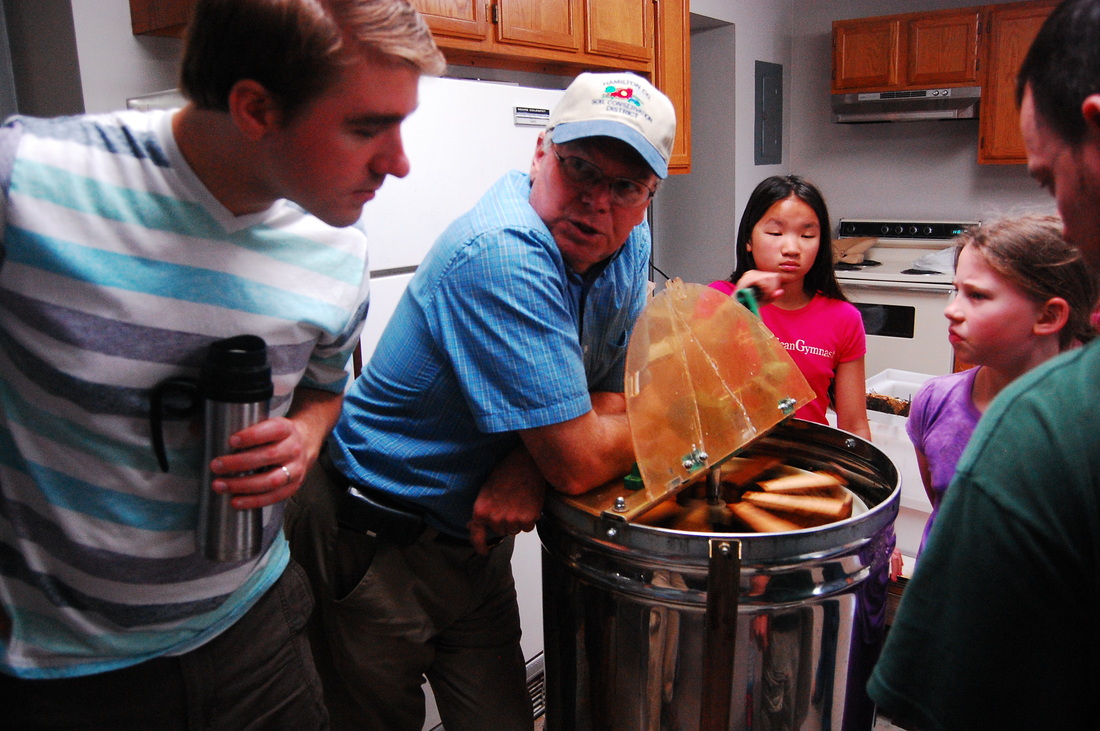
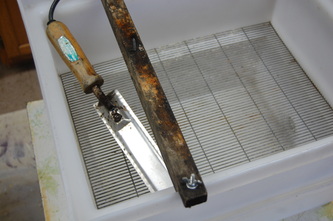



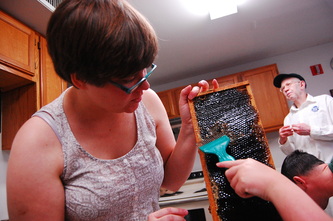
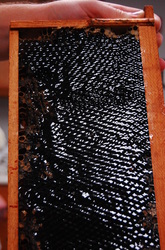
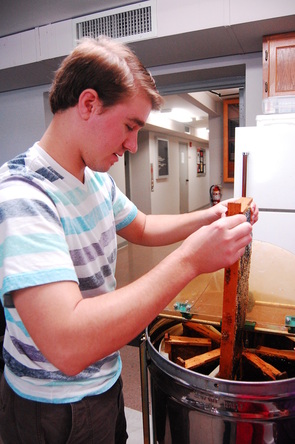
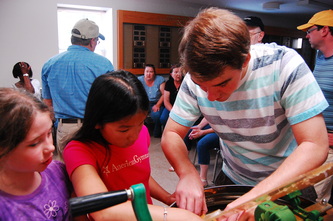





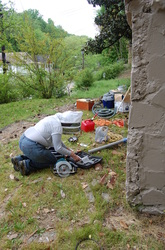


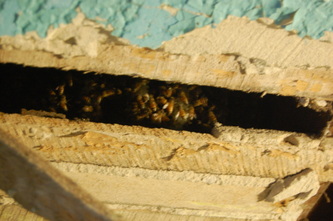





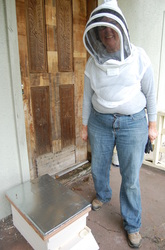
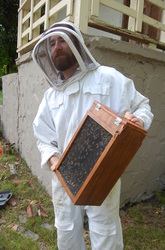











 RSS Feed
RSS Feed
